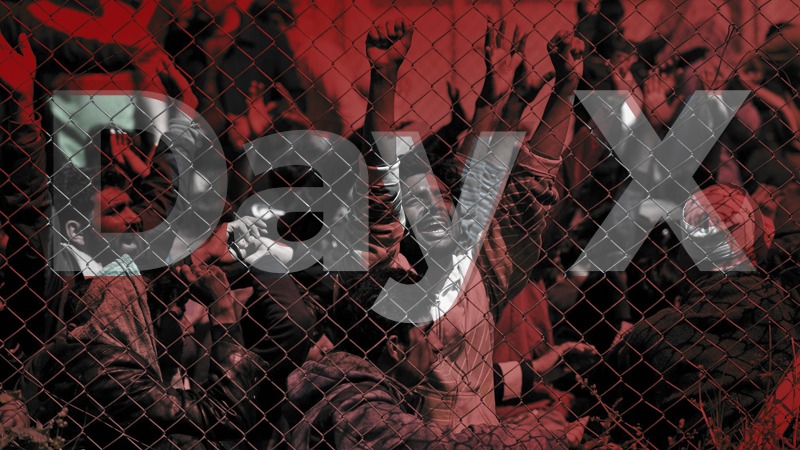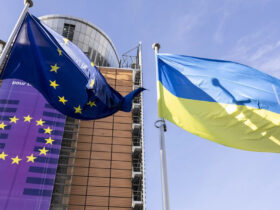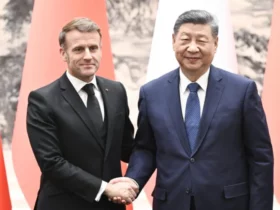Numerous media are reporting that the Federal Criminal Police of Germany have uncovered a network of as many as 200 militants within Germany’s special forces and among military veterans conspiring for “Day X.” As has since been revealed, “Day X” stands for a whole host of armed operations planned for “when civil order collapses in Germany.” The conspiracy reportedly included “hit lists” of politicians, migration advocates, and – supposedly – “immigrants” altogether to be assassinated in an apocalyptic plan of action that, if reports are true, has protectors in the upper ranks of Germany’s elite security forces, and boats extensive networks throughout German society.
What’s more, the “Day X” conspiratorial network has not only been revealed to have been preparing plans and stockpiling weapons for some time already, but has also been framed as the latest and biggest in a chain of numerous such “terror cells” appearing within the German police and “revolutionary far-right groups“, all motivated to confront immigration with violence.
In other words, even regardless of whether these evermore frequent reports are true, it is clear that the heightening controversy over unprecedented immigration into the European Union is directly compromising the security, intelligence, and monopoly over violence of the EU’s leading state. The lag in EU coverage of the event is also telling as to something truly politically serious.
This is a rather spectacular illustration of the extent to which current migration influxes into the EU, and sovereignty, on the most basic of levels, have intersected in the key political pressure point of the European Union. As we just saw, this tension has resulted in a number of European states rejecting the UN Global Migration Compact explicitly in the name of sovereignty.
That “sovereignty” is now being evoked against migration policies is a momentous sign of the times which deserves deciphering. The last several decades of unipolar, Atlanticist globalization, which, on the geopolitical level, meant the hegemonic privileging of the sovereign right to the US-led West in international relations, and, on the ideological level, strove to liquidate the concept and discourse of sovereignty as an “obstruction” to a “McWorld of global citizens”, are drawing to a close. In the power vacuum being created between the United States’ strategic decline and Trump-administrated “geopolitical austerity”, and the re-emergence of Eurasian powers like Russia and China advocating and precipitating a multipolar paradigm for international relations, “sovereignty” is re-emerging as a key concept in European political discourse, whose 21st century realities are being contested in this very moment.
The gauntlet thrown down before the UN Global Migration Compact by a number of EU member-states is highly symbolic: it shows that they recognize the relevance of sovereignty, and recognize that it is at stake in one of Europe’s most troubling crises.
Present demographic trends related to immigration into the European Union are unprecedented. According to official statistics, in 2016 the European Union accepted more than two million, non-EU migrants, and by January 2017 foreign citizens made up 7.5% of the EU population. The latter figure excludes the nearly one million non-EU immigrants who were granted citizenship by EU member-states in 2016. Moreover, these figures do not account for what is very likely several million persons of non-European origin who have been naturalized and acquired citizenship under jus soli. On the level of individual member states, the statistics are even more glaringly considerable. In January 2016, France counted a foreign-born population of 11.8%. In 2017, the UN counted nearly 15% of the population of Germany as foreign-born immigrants, and the figure for the United Kingdom was 14.4%. In the same year, Italy saw at least 8.2% of its population consist of foreign nationals. In 2017, 24.1% of the Swedish population was born abroad or in Sweden to two foreign-born parents, the majority being of non-European origin. Again, none of these statistics account for previous waves of since naturalized non-European immigrants, nor their demographic expansions, nor the statistics of illegal immigrants suspected to be within the EU, officially, roughly estimated in 2017 to be nearly 619,000, which figures against the European Border and Coast Guard Agency’s estimate of at least 2.5 million illegal entries since 2015. The largest sources of immigration into the EU remain the mostly destabilized zones of North and Sub-Saharan Africa, and the Middle East, and it is persons from these origins that accounted for roughly 50% of the total number of EU citizenships granted in 2016.
These statistics, regardless of various interpretations of their political, economic, and cultural consequences, speak to two essential trends: (1) the populations of more than a few of the European Union’s 28 members are changing intensively and extensively, (2) and the majority of Europe’s “new populations” are from states, cultures, and societies which are not identified with the history of European cultures, and which subscribe to systems of values which are different from, and in some cases have even historically been in conflict with, those that have evolved in Europe.
Simultaneously, these migration flows have correlated with an increase in violence, for example in what Europol deems “religiously inspired terrorism”, largely perpetrated by naturalized or foreign persons from these areas, which has claimed the lives of at least 347 people across the EU since 2015. In 2016, a German intelligence report confirmed long-standing suspicions that recent migrant and refugee waves are known to include operatives and sympathizers of designated terrorist organizations with the intent to commit acts of violence in Europe. Thus, even apart from heatedly debated demographic and cultural consequences, recent migration processes have also been accompanied by security threats to EU member-states and their populations. This, let us not forget, is in addition to the “anti-immigrant terror cells” supposedly embedded throughout one of the EU’s leading armed forces that are preparing their own violence.
At the same time, the geopolitical fingerprints of this migration crisis and its impact on EU security and “political unity” are increasingly evident. The destabilization of European politics wreaked by rapid immigration flows corresponds not only with the US’ recent destabilization operations in North Africa and the Middle East, but also with the US’ mounting attempts to prevent a European-Russian rapprochement and to exact NATO tribute from the continent while the US attempts a strategic retreat from Atlanticism.
In connection with this geopolitical context of tug-of-war, a growing number of analysts have pointed to the relevance of the concept of “Weapons of Mass Migration”, such as studied in Harvard research fellow Kelly Greenhill’s telling 2010 book, and to the US’ long-standing practice of “hybrid war.” It is also no secret that US lobbyists have devoted massive resources to encouraging migration influxes into the EU. In other words, the danger remains of a US-facilitated “clash of civilizations” scenario as part of a larger destabilization campaign. The Russian and Syrian governments have officially warned of such developments on the highest level.
It is in this context that sovereignty and self-determination are becoming the last resorts of individual EU member-states who realize that the Brussels establishment remains committed to Atlanticism, not Europe, and that they must take the most elementary questions of demography and security into their own hands. Just what this sovereignty will mean, who will claim to wield such, and whether the EU will survive the present challenge of re-asserting sovereignty over processes gaining momentum within its own borders, are likely to be decided in the accelerating battle over migration.

















Leave a Reply